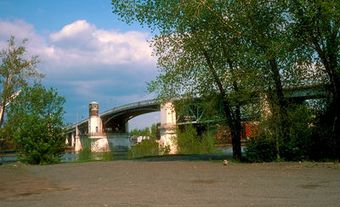Farnham
Farnham, Qué, Town, pop 7809 (2006c), 7747 (2001c), inc 1876. Farnham is located about 65 km southeast of Montréal on the banks of the Yamaska River, at the boundary between the plain of Montréal and the Eastern Townships. The Township of West Farnham (createdDuring the first 40 years (1810-50), the chief source of revenue was the manufacture of potash. The construction of the Stanstead-Shefford & Chambly Railway in 1857 began Farnham's remarkable progress as a railway centre, thanks to its geographic position and competition among railway promoters. The South Eastern Railway was constructed from West Farnham to Richford and reached Newport, Vt, in 1873. It established its headquarters, roundhouse and repair shop in Farnham. Later, no fewer than 5 lines converged here. In the early 20th century, the CPR employed some 500 men from Farnham (pop 3114, 1901c); however, these activities diminished in the following decades.
Farnham's development tended to be limited by the growth of road transportation, the transfer of much of the repair work to Montréal, and the removal of several regional railway lines after 1925. Two of the lines have been converted to bicycle trails (see TRANS CANADA TRAIL). Through the years, Farnham's industries have also included sugar beet refining, woodworking, and safe and vault, clothing and rubber manufacturing. Today the main industries are the manufacture of textiles, iron cables, linoleum, carpets and tables and chairs.

 Share on Facebook
Share on Facebook Share on X
Share on X Share by Email
Share by Email Share on Google Classroom
Share on Google Classroom

